|
Primate Bay
The jungles of the Northeast were a challenge in the monsoon. That was given. But there were also fairly tempting factors that tilted the scales in our favour. First, the Gibbon WLS is one of the few sanctuaries open to visitors during the monsoon. Second, the sanctuary covers a small area (around 21 sq km). Third, there is a higher density and variation of wild fauna here. Fourth, it’s well connected by road and railway and last, you can stay in the sanctuary.
Assam has fairly good roads and we started early, at 5am, from Coochbehar, and drove nine hours to Kaziranga National Park(which was closed for the season) and went on to Mariani, a small township 20 km away from Jorhat. it was almost dark at 6pm when we reached the Forest Rest House of the sanctuary under Mariani Forest Range.
The sanctuary has unique floral diversity consisting of Assam plains alluvial semi-evergreen forests with pockets of wetevergreen covering a compact area of only 20.98 sq km. The top canopy of the forest comprises Hollong (Dipterocarpus nacrocarpus), Sam Kathal (Artocarpus chaplasha), Bhelu (Tetrameles nudiflora), Amari (Amoora wallichii); the middle tier consists of Nahar (Mesua ferrea), Agar (Aquilaria agollocha), Bhomora (Terminalia bellirica) and the lower tier is mainly shrubs, bamboos and canes. Our photo-trip began a little late the next morning due to the heavy rains through the night. We couldn’t resist venturing into the dense jungle with our guide, Sri Deben Bora, a very senior and vastly experienced forest guard. After hearing a gibbon’s call, we set off for the eastern corner of the sanctuary and after a hectic hour, we found a pair of the rare Hoolock gibbon (Hoolock hoolock) and watched them from a distance, which was regrettably too far for good photography.
Another half hour later, we spotted a family with a baby gibbon almost in the centre of the park. We were so excited in photographing the family that we didn’t even register the leech attack. The Hoolock gibbon is a rare primate and the only species of ape in the Indian sub-continent, protected under Schedule-I of Wildlife (Protection) 1972 Act and is listed as ‘Endangered’ by IUCN. It is an arboreal animal and lives in dense evergreen and semi-evergreen forest in plains, foothills and hills. The population of this rare primate has declined in many parts of the Northeast due to illegal hunting and severe habitat destruction. It is difficult to spot it; it flees as soon as it senses human presence. The range of the Hoolock gibbon is restricted to the north-east of India, mainly Assam and Arunachal Pradesh and some parts of Bangladesh. It feeds mainly on ripe fruits, flowers and shoots of specific plants.
While returning from our first morning excursion, we spotted a Northern pig-tailed macaque on a wild mango tree adjacent to the Forest Rest House. The lone male was eating a ripe mango fruit and gave us ample opportunity to photograph it. This species of primate is another speciality of the Gibbon WLS. In appearance, it is quite similar to the widely found Rhesus macaque, except for a distinctive short tail resembling that of a pig, and dark brown or black fur on the top of their heads that looks like a depression in the centre of their heads. The species is currently assigned a globally-threatened status, however it can easily be spotted feeding in fruit-bearing trees of the Gibbon sanctuary where its population is at an increasing trend. Pig-tailed macaques are frugivorous, but they also consume a wide variety of other foods including insects, seeds, young leaves, leaf stems and fungus.
On the same mango tree, we spotted a Malayan giant squirrel (Ratufa bicolour) feeding on a mango. The afternoon sun didn’t allow us a decent capture of this tree-dwelling mammal. The next day, however, gave us many opportunities to shoot it. The black giant squirrel or Malayan giant squirrel is a large tree squirrel in the genus Ratufa, native to the Indo-Malayan zootope, a diurnal, canopy-dwelling mammalian species, commonly found in evergreen and semi-evergreen broad-leaved forests of the Northeast and West Bengal. This squirrel is fond of fruits, leaves and seeds and is rarely seen on the forest floor. It is identified by its deep brown to black body, buff underparts and a large black tail; and is listed as ‘Near Threatened’ by the IUCN due to loss of habitat and hunting. Day two in the forest began with a photo-shoot of the same Pig-tailed macaque on the same mango tree followed by a hectic jungle trek in search of other primates. We desperately tried to find the colony of the Stump-tailed macaque , which has the largest population among the primates in the sanctuary. The Stump-tailed macaque, also called the Bear macaque, is a species of macaque found in South Asia. In India, it is found south of the Brahmaputra River, in the northeastern part of the country. Its range extends from Assam and Meghalaya to eastern Arunachal Pradesh, Nagaland, Manipur, Mizoram and Tripura. Though these primates are primarily frugivorous, they also eat many types of vegetation, such as seeds, leaves and roots, and hunt freshwater crabs, frogs, bird eggs and insects. The calls of the Hoolock gibbon failed to distract us from our search of the Stump-tailed macaques. The quest of these macaques finally ended in vain, but led us to chance encounter with another primate across a railway line passing through the forest. Our guide spotted a pair of Capped langurs from a considerable distance. It was almost 11am and very humid.
As we approached, we found a large colony of Capped langur consisting 30-35 individuals, including five to six babies! The Capped langur belongs to the Cercopithecidae family and is one of the cutest primates. It is mainly found in sub-tropical or tropical dry forests of Bangladesh, Nepal, Bhutan, China, India, and Myanmar. Though currently listed as ‘Vulnerable’ by the IUCN (from habitat loss), this sanctuary has seen rising numbers, making sightings easier. Some of the adult and sub-adult Capped langurs were feeding on aquatic plants on nearby water-logged areas while others were sitting idle on trees giving us ample scope to photograph them. Other than the primates, the sanctuary is also a habitat for leopards (Panthera pardus), Pangolins (Manis crassicaudata), Indian tent turtles (Kachuga tecta tecta) and Common monitor (Varanus bengalensis). Some important avifauna residing here are Great Hornbill, Oriental Pied Hornbill, Osprey, Hill Myna, Kalij Pheasant and the rare White-winged Wood Duck. The journey to the primate-dominated forests of Gibbon WLS was indeed a memorable one, made more so by simply understanding the hard work of local forest officials in efficiently protecting and managing the small but biodiverse forests.However, a broad gauge railway line bifurcating the forest appeared to be a serious threat to its biodiversity. We left Gibbon WLS,carrying with us the hope of returning, this time, in the winter.
Approach and access
From Gibbon to Hoollongapar
|

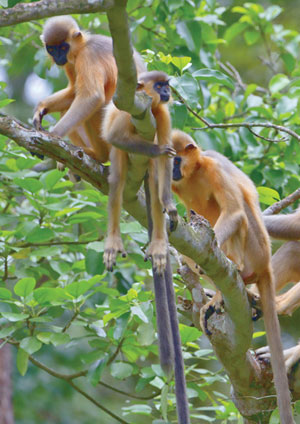
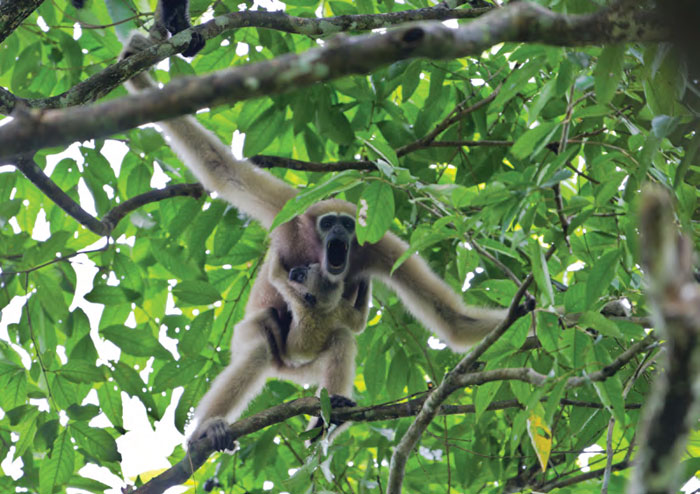
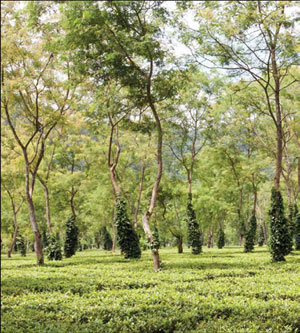
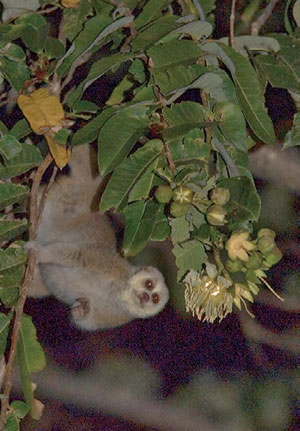
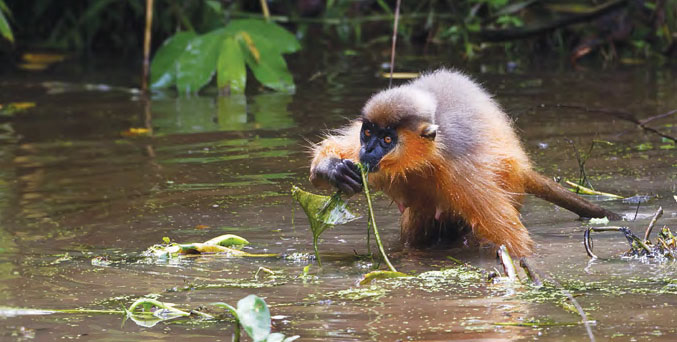
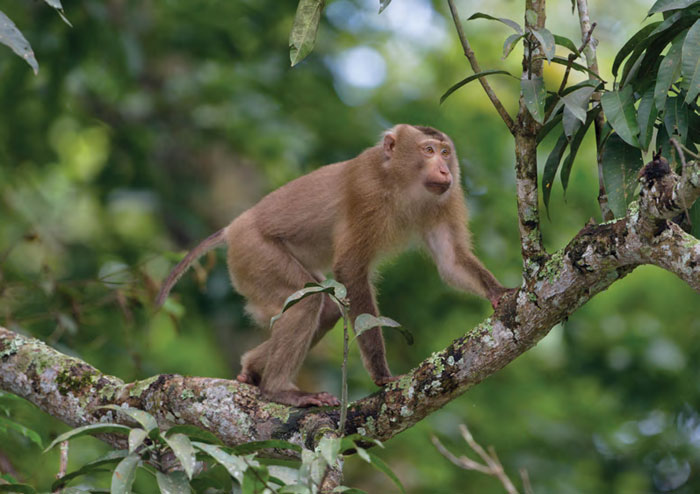
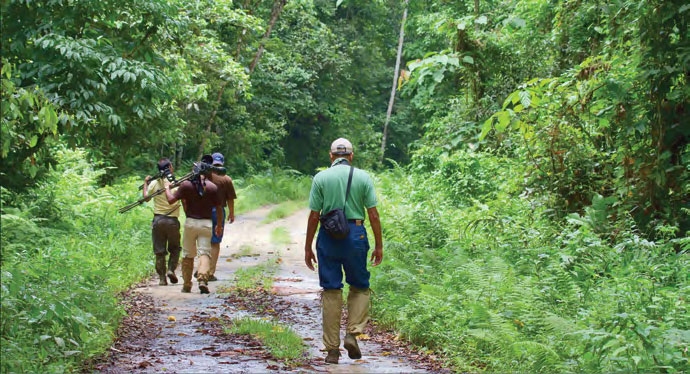
 Ujjal Ghosh
Ujjal Ghosh